Essential Techniques for Bird Nail Trimming
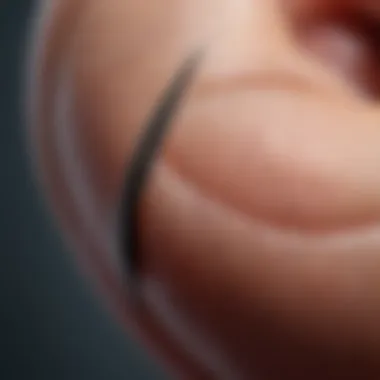
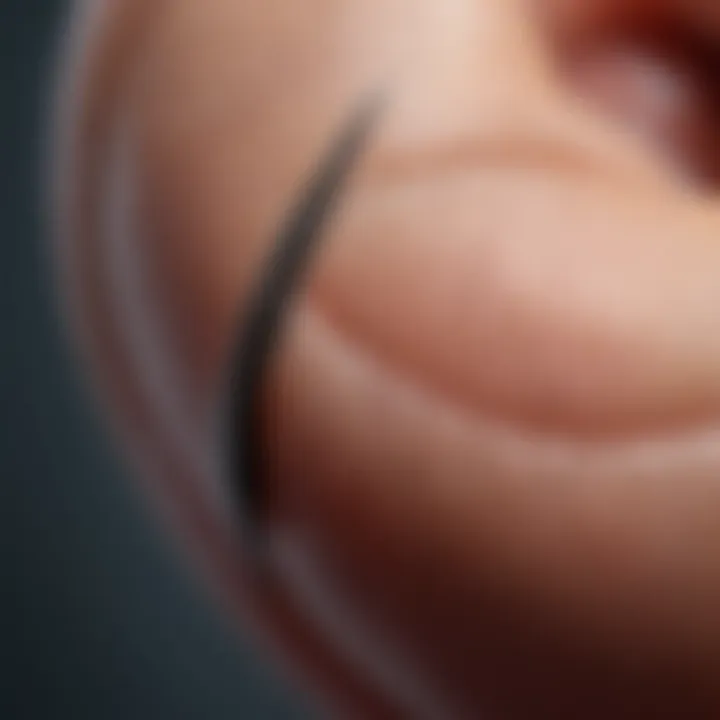
Intro
Owning a pet bird can bring joy and unique companionship, but it comes with responsibilities that go beyond feeding and providing a safe space. Among those tasks, nail trimming often takes center stage. It’s crucial not just for aesthetics but also for the health and safety of your feathered friend. Understanding the significance of proper nail care is the first step in ensuring your avian companion stays healthy, active, and comfortable. This guide serves as a windows into the nitty-gritty of bird nail trimming, elucidating every aspect of the task.
Understanding Your Pet
Pet Behavior Basics
Birds are incredibly social creatures. They thrive on interaction, stimulation, and a structured environment. Understanding their behavior helps in creating a comfortable atmosphere to make nail trimming less stressful.
Common Breed Characteristics
Different bird species exhibit unique behaviors and traits that affect their nail care. For instance, larger parrots like Macaws may require more frequent trims than smaller finches due to their growth rate. Not only does it help with nail health, but it also aids in managing their overall activity levels.
Species-Specific Needs
Every bird comes with its own quirks. Parakeets, for example, may engage in more climbing, resulting in naturally worn nails, while cockatiels often need regular trimmings to avoid snagging during playtime. Recognizing these needs can guide your trimming schedule, ensuring it aligns with your bird's specific requirements.
Pet Care and Maintenance
Feeding Guidelines
A balanced diet contributes to your bird's overall health, including nail health. Ensure your pet receives necessary nutrients, vitamins, and minerals. Seeds may not always provide the complete nutrition, so considering pellets or fresh veggies could keep their nails and feathers healthy.
Grooming Essentials
While nail trimming is critical, remember that grooming goes beyond that. Regularly check for feather issues and other signs of discomfort. Familiarizing your bird with the grooming routine helps in mitigating stress during nail trimming.
Hygiene Practices
Keeping your bird's environment clean is integral. Dirty cages can lead to infections that affect not just health, but also nail growth. Clean the living space frequently and ensure access to clean water and a place for them to bathe.
Training and Development
Basic Commands and Skills
Training your bird to become accustomed to handling can ease the process of nail trimming. Teach simple commands like "step up" or "stay" using positive reinforcement. This will help create a bond of trust and minimize resistance during grooming.
Behavioral Training Techniques
Consistency is key. Reinforcing good behaviors with praise or treats will encourage your bird to remain calm. Remember always to keep sessions short to prevent overwhelming them.
Addressing Common Behavior Issues
Some birds may resist nail trimming due to previous negative experiences or fear. If your bird is particularly anxious, consulting with a veterinarian or a professional trainer can provide new strategies that cater to your pet's specific anxieties.
Health and Wellness
Routine Vet Check-ups
Regular veterinary visits play a crucial role in your bird’s health. These checks can help monitor nail growth and any underlying health issues that may affect grooming needs. A vet can also perform trims expertly, which may be necessary for particularly skittish birds.
Vaccination Needs
Keep your bird’s vaccinations updated, as illness can impact their overall well-being and may require different grooming regimens. Consult your veterinarian for the vaccination timetable suitable for your companion.
Recognizing Signs of Illness
Keep an eye on your bird's behavior; lethargy, refusal to eat, or noticeable changes can indicate health issues. Regular nail checks can also serve as a visual cue for other concerning symptoms such as swelling or discoloration.
Enrichment and Activities
Indoor vs. Outdoor Activities
Birds need both indoor and outdoor stimulation. While flying outdoors can help naturally trim nails, indoor playtimes with climbing spaces can prevent overgrowth. A variety of engaging activities keeps their birds physically active and less prone to damaging their nails.
Interactive Toys and Games
Using toys designed to promote natural behaviors can keep your bird entertained, which might inadvertently maintain nail length. Consider toys that allow climbing, tearing or chewing for subtle nail wear.
Socialization Opportunities
Birds are social beings. Regular interaction with other pets or even humans helps reduce stress and fosters a healthy, happy environment. Strong social ties can lead to less anxiety during grooming, making the task easier for everyone involved.
Important: Always be patient and gentle when handling your bird during nail trimming. Stress can negatively affect your pet’s health and willingness to cooperate.
By the end of this guide, pet owners will have the confidence to tackle nail trimming effectively and safely, ensuring their avian companions live comfortably and happy.
Understanding Bird Nails
Understanding bird nails is not just a matter of aesthetics; it plays a significant role in the health and well-being of our feathered friends. Nails can affect a bird's mobility, overall comfort, and can even lead to serious health issues if neglected. In this section, we will dive into the anatomy and growth patterns of bird nails, allowing pet owners to grasp why nail care is so crucial.
Anatomy of Bird Nails
Structure of the nail
Bird nails consist of three main parts: the nail bed, the quick, and the nail tip. The nail bed is kind of like the foundation of a house; it supports the nail and is vital for its health. The quick is the living tissue inside the nail that supplies it with blood and nerves. If you cut too far into it, a bird can experience pain and bleeding, potentially leading to a traumatic experience for both the owner and the pet. The tip of the nail is the outer hard part, which can naturally wear down through regular activity.
It's notable that different species have varied nail structures, impacting their grooming needs as well. For instance, perching birds usually have shorter, more curved nails suited for gripping, while ground-dwelling birds may have longer, flatter nails for walking. Understanding these distinctions is essential when assessing how often and how much care your bird's nails require.
"Bird care often begins with awareness. Understanding their anatomy is the first step towards better grooming practices."
Types of bird nails
Bird nails can generally be categorized into two types: climbing nails and walking nails. Climbing nails, found in birds like parrots, are strong and designed to grip branches and other surfaces, while walking nails are broader and flatter, providing stability on the ground.
Both types serve different purposes and thus, require varying forms of care. For instance, climbing nails can be prone to overgrowth if the bird doesn't have adequate opportunities to naturally wear them down through climbing. Conversely, walking nails may require more frequent trims to prevent discomfort during movement. Knowing your bird's nail type helps you tailor your trimming schedule effectively.
Growth Patterns
Factors affecting nail growth
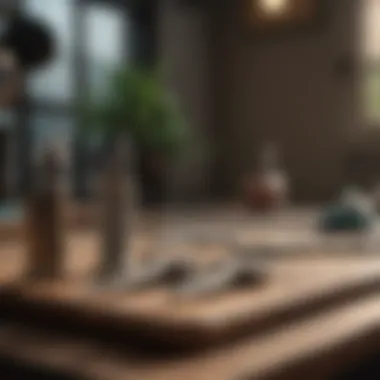
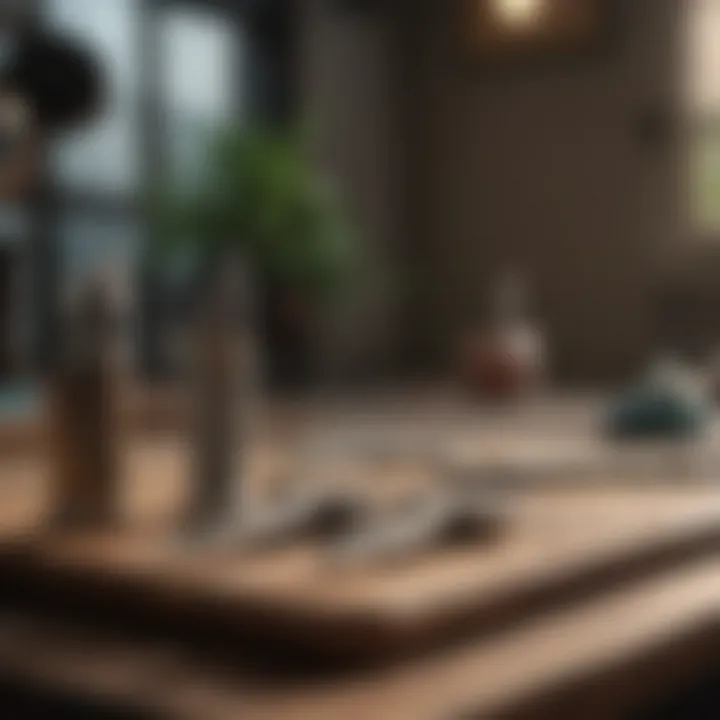
Nail growth in birds can be influenced by several factors, such as age, diet, and activity levels. Younger birds often experience faster nail growth, owing to their overall development pace. A balanced diet rich in nutrients plays a critical role as well; for instance, a deficiency in calcium can lead to brittle nails, which may break or splinter easily. On the other hand, increased activity can serve as a natural way to keep those nails short and healthy.
Bringing various textures and perches into their environment can help. Natural branches or rough surfaces provide essential wear that keeps the nails in check.
Natural nail wear
The natural wear of nails happens as birds engage in daily activities like climbing and perching. It's crucial to provide an environment that encourages such behaviors. Birds that are housed in standard cages without engaging activities may develop overgrown nails, leading to difficulties in movement and discomfort.
Curiously, some bird owners may overlook the importance of a stimulating environment in relation to nail health. Recognizing that birds need opportunities to engage in natural behaviors can help ensure they maintain their nails properly. Activities such as climbing and foraging serve dual purposes: keeping the mind active and promoting physical health, including nail care.
Importance of Nail Trimming
Nail trimming is crucial for maintaining the health and well-being of your feathered friends. For both aesthetic and health reasons, keeping your bird’s nails at an appropriate length is no trivial task, yet it can profoundly impact their quality of life.
Health Considerations
Impact on mobility
When a bird's nails grow too long, they can interfere with its ability to move freely and gracefully. Birds naturally use their claws for perching, climbing, and playing, so if their nails snag or drag along surfaces, it can lead to frustration and discomfort. A key aspect of maintaining a bird's mobility is ensuring these nails are correctly trimmed, which helps in preventing any debilitating effects. In turn, this promotes physical activity and encourages healthy behavior.
Long nails can place unnecessary stress on a bird's foot structure, causing pain that may not be immediately visible to the casual observer. This can manifest in a decline in their natural agility or even a reluctance to engage in typical activities. Engaging in regular trimming can facilitate easier movement, thereby contributing to their overall health and vitality.
Risks of injury
Another important consideration is the rising risk of injury from overgrown nails. Sharp, elongated nails can lead to scratches and cuts not just on your bird’s own feet, but on humans or other pets. Moreover, nails that are too long have a higher chance of becoming caught in toys or cage bars, which could result in distress or serious injury. This underscores the significance of timely trimming, as it can effectively reduce such hazards.
It’s also worth noting that, if injuries occur, they can necessitate veterinary intervention, which can be both costly and distressing for the bird. To avoid such scenarios, keeping those nails in check is certainly the best route to take.
Behavioral Impacts
Nail discomfort and stress
Discomfort from long nails often translates to increased stress levels in birds. When improperly trimmed nails dig into their feet or impede movement, it can alter their mood and behavior. A bird may become more irritable or withdrawn, further complicating its relationship with its owner. The discomfort often manifests as more vocalizations or odd behaviors, which are not typical of its normal temperament.
It’s vital to address this discomfort not just to enhance their well-being, but also to nurture a more harmonious living environment for both the bird and its human companions. Treating nail issues proactively can lead to happier birds, which, in turn, reflect positively on their interactions with us.
Effects on perching and climbing
When a bird's nails are too long, it can lead to a skewed relationship with perching and climbing—two of its most instinctual behaviors. Long nails can create friction during these activities, making it challenging for birds to easily grip onto their favorite spots.
This affects their confidence and willingness to explore their environments, which may limit their overall activity levels. Additionally, it can lead to a decline in mental stimulation that comes from engaging in natural behaviors. Proper nail maintenance not only enhances their perching and climbing ability but helps maintain their interest in exploring and playing, which is vital for their emotional and physical health.
Regular nail trimming isn’t merely about grooming; it’s a crucial part of ensuring your bird lives a healthy, active, and engaged life.
By understanding the direct and indirect implications of nail trimming, pet owners can take actionable steps to enhance their bird's comfort and longevity. Investing time in this simple yet significant aspect of bird care can yield long-term benefits, fostering a happier and healthier pet.
Tools Required for Nail Trimming
When it comes to taking care of your feathered friend, the right tools can make all the difference in the world, especially when it comes to nail trimming. These tools are not just simple accessories; they are crucial components that enhance the safety and comfort of the process, ensuring a positive experience for both you and your bird. Using the appropriate equipment helps minimize the risk of injury and can make the trimming process smoother as well.
Essential Tools
Nail clippers
Nail clippers are the frontline heroes in the battle against overgrown bird nails. These tools typically come in various shapes, but the most common for bird owners are scissor-type and guillotine-style clippers. A key characteristic of nail clippers is their sharp and precise blades, which enable quick and clean cuts. The benefit of using high-quality nail clippers lies in their ability to reduce stress for your bird; a swift and clean cut minimizes discomfort, making the entire experience less traumatic.
One unique feature of many bird nail clippers is the presence of a guard to prevent over-trimming, protecting the sensitive quick inside the nail. However, with a multitude of options available, it's essential to choose a pair that feels comfortable in your hand, as you’ll want to maintain control during the trimming process.
Manicure files
Manicure files serve as a wonderful complement to nail clippers. While clippers provide the initial trim, the files help in smoothing the edges and preventing splintering. Their grit comes in different degrees, which allows for custom touch-ups post-trimming. The key characteristic here is their versatility; some files are designed to be gentle enough for soft bird nails while still being effective enough to shape tougher nail ends.
A unique aspect of manicure files is that they can also be used proactively as a part of regular nail care to avoid overgrowth. Nonetheless, it’s important to use the right type; using a file meant for humans may be too coarse or rough and can cause discomfort.
Styptic powder
Styptic powder is an essential tool in any bird owner's first-aid kit, especially during the nail trimming procedure. It quickly stops bleeding if you've accidentally cut into the quick. The primary feature of this powder is its hemostatic properties, which allows it to swiftly seal broken blood vessels.
This is why having styptic powder on hand is a smart move. In a stressful situation, it provides immediate assistance, lending peace of mind during the trimming process. However, knowing how to apply it correctly is critical; applying too much can lead to a mess, while too little may not do the job. Thus, this tool serves as both a safety net and a proactive measure, ensuring that your bird remains unharmed and protected.
Choosing the Right Tools
Selecting the right tools for nail trimming isn't as straightforward as picking the first option you find. It takes careful consideration of brands and options, along with weighing quality and price to find what works best for you and your bird.
Brands and options
There are several brands out there that provide specialized products for bird grooming. Popular names like PetSafe and Super Bird Creations stand out for their durable and ergonomic designs that cater specifically to avian needs. One of the benefits of going with recognized brands is the reassurance of quality and customer service.
The downside of opting for well-known brands is that they often come with a higher price tag. Nevertheless, the assurance of safety and effectiveness tends to outweigh the costs. Thus, when choosing brands, look for those with a good track record in the pet industry.
Quality vs. price
When it comes to quality versus price, this debate often leads to varied opinions among bird owners. It's a balancing act; while it may be tempting to save a few bucks on cheaper tools, investing in high-quality equipment can yield better results in the long run. Tools that are made from strong materials tend to last longer and perform better, which can save you hassle and costs down the road.
Many bird owners would argue that spending more upfront is worthwhile since it can lessen the likelihood of needing replacements. On the other hand, some might find that certain affordable options deliver satisfactory results. Therefore, knowing your budget and deciding what's reasonable for your pet care routine is crucial.
"The right tools can make the difference between a chore and a simple routine, ensuring that both pet and owner feel secure throughout the process."
In summary, the tools you choose for nail trimming play a pivotal role in maintaining your bird's comfort and safety. Understanding the function and value of each tool can greatly enhance the trimming experience overall.
Step-by-Step Nail Trimming Process
Nail trimming isn’t just a simple chore; it’s a significant part of maintaining your bird’s health and happiness. A well-executed nail trim contributes to the overall well-being of your feathered friend. It helps prevent injuries, ensures comfort during activities, and supports mental health by reducing stress related to discomfort. For those who might feel intimidated by the task, breaking down the process into specific steps makes the task less daunting.
Preparing Your Bird
Calming techniques
Getting your bird ready for a trim is crucial. You don’t want to jump straight into it and risk stressing your feathered companion. Calming techniques play a key role in making this process smoother. One effective method is to gently talk to your bird. Soft, reassuring words can work wonders in easing their tension.
Another technique is to use soothing music or ambient sounds, creating a peaceful environment. The unique feature about calming techniques is their versatility; you can easily adjust them depending on your bird's personality. However, it’s essential to remember that what works for one bird might not work for another. This also bears a disadvantage—you may have to experiment a bit to find out which technique resonates well with your pet.
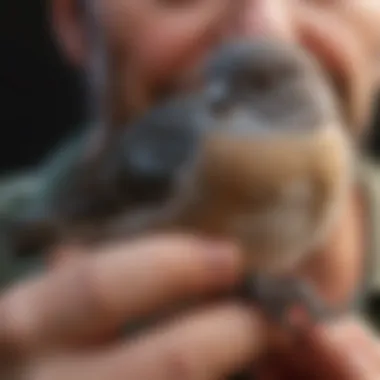
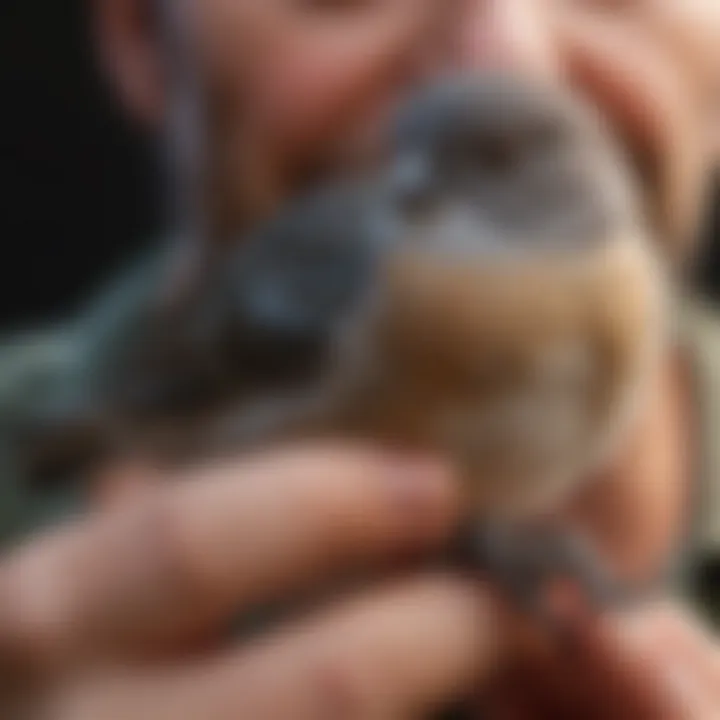
Setting up a safe space
Before you start, it’s vital to set up a safe space for the trimming session. This space should be calm and free from distractions and hazards. The key characteristic here is creating an area where your bird feels secure. Using a small towel for your bird to perch on can prevent slips and falls, making them feel more settled.
Moreover, a safe space minimizes the risk of sudden movements that can endanger both the bird and the person doing the trimming. This setup is not just beneficial—it's an indispensable choice for a successful trimming process. Be cautious, though. Too confined a space can create anxiety, so it’s all about striking that delicate balance.
Executing the Trim
Identifying the quick
The quick can be a sensitive topic among bird owners. A solid understanding of where the quick is located will prevent painful accidents during trimming. The quick contains blood vessels and nerves; for lighter-colored nails, it’s easier to spot, appearing as a pinkish hue. The unique feature here is its location varies amongst different species and even individual birds.
Identifying the quick is important as it helps you cut the nail safely, avoiding bleeding. Misjudging and cutting into the quick can be distressing for your bird, hence it's vital to maintain focus and gauge the nail's length. Knowing where the quick lies increases your confidence and effectiveness during the trimming.
Trimming techniques
Different techniques can be employed when trimming bird nails. Whether you choose to use clippers or a file depends largely on your preferences and your bird's response to these tools. A popular choice among pet owners is the scissor-type nail clippers since they provide better control.
The unique advantage of using the right technique means you can ensure a smooth cut, thus reducing the risk of injury. For example, when trimming, it's often recommended to hold the nail firmly without squeezing it too hard, applying gentle pressure to maintain stability during the trim. Emphasizing technique over speed ensures a safer and less stressful experience for both bird and owner.
Aftercare
Monitoring for bleeding
After the trimming is done, keeping an eye on the nails is just as critical. Monitoring for bleeding helps you quickly address any issues that could arise from a miscalculated cut. Should you notice any bleeding, immediate application of styptic powder can help. This powder works quickly, promoting clotting and soothing the area.
The importance of monitoring cannot be overstated; it's better to act swiftly rather than wait for a potential problem to escalate. Keeping a clean and calm environment also aids in assessment. If bleeding occurs, things like darkness or stress can exacerbate the situation and take away from that crucial aftercare phase.
Reinforcing positive behavior
Lastly, reinforcing positive behavior after trimming can turn a potentially distressing experience into a more enjoyable one for your bird. Using treats or verbal praises helps to create a sense of reward, which can be helpful in future trimming sessions. When your bird realizes that nothing bad comes from nail trimming, it helps build trust.
The unique feature of this reinforcement is that it changes your bird’s perception of nail trimming. Instead of associating it with fear or discomfort, they start linking it with a positive experience. This not only has immediate benefits for each session but also can lead to a more cooperative bird overall.
Frequency of Nail Trimming
Getting the timing right for nail trimming is crucial. Not only does it impact your bird's overall health, but it can also prevent behavioral issues that arise from discomfort. This section aims to shed light on how often you should trim your bird's nails based on various factors.
Determining a Schedule
Nail trimming is not a one-size-fits-all chore. It depends a great deal on the bird's age and lifestyle.
Age-related considerations
As birds mature, their nails grow at different rates. Young birds, especially those in their developmental stages, may require trimming more frequently. This is because their nails can grow rapidly as they explore their surroundings. An important thing to note is that as birds age, they often slow down in activity, leading to less natural wear on their nails. Thus, older birds might need a careful schedule that reflects their lower activity levels.
The key characteristic of age-related considerations is its adaptability. It allows pet owners to be in tune with their bird’s changing needs.
- Benefits: Understanding these nuances helps prevent overgrown nails.
- Disadvantages: Missing the window for necessary trims can cause issues, leading to potential injuries and stress.
Lifestyle impacts
Every bird has a lifestyle unique to them. For instance, a parakeet that flits around in an active environment may naturally wear down its nails faster than a cockatoo that lounges most days. Environmental factors like surface textures - such as perches offering rough surfaces – can influence nail wear as well.
Recognizing lifestyle impacts means acknowledging that some owners may need to trim their bird’s nails frequently, while others may find they need to do it less.
- Benefits: Tailoring nail trimming to a bird's lifestyle allows for optimal health and comfort.
- Disadvantages: A busy owner’s forgetfulness may lead to irregular trimming schedules, resulting in overgrowth.
Signs Your Bird Requires Trimming
Knowing when your bird needs a nail trim can make all the difference in maintaining their comfort and health. Here are some telltale signs.
Excessive nail length
Nails that begin curving around or creating sharp points are a clear indication of excessive length. Overgrown nails can pose significant risks, such as injury from snagging on objects or making it difficult for the bird to perch or move comfortably.
The key feature of excessive nail length is its obvious visibility. A simple glance at your bird’s feet can reveal the need for a trim.
- Benefits: Catching overgrowth early helps prevent injuries.
- Disadvantages: If nails grow excessively long, the process can become distressing for both the bird and owner.
Behavioral changes
Sometimes, behavioral cues thrust themselves right into the spotlight, indicating the need to trim. A bird that becomes more agitated, changes its perching habits, or seems less active might signal discomfort due to long nails.
The key characteristic of behavioral changes is its subtlety. Birds can’t verbally tell us they’re in pain, but watching them closely can provide insights into their emotional and physical state.
- Benefits: Early detection of behavioral signs allows owners to rectify issues swiftly, improving quality of life.
- Disadvantages: Relying solely on behavior without checking the nails might lead to missed opportunities for timely trims.
"Understanding your bird’s unique needs can prevent discomfort and potential health concerns."
Common Mistakes to Avoid
Being a bird owner is a rewarding experience, but it's not without its pitfalls, especially when it comes to nail trimming. Understanding the common mistakes that can occur is crucial for maintaining the health and well-being of your feathered friend. Not only can wrong techniques lead to physical harm, but they can also cause emotional stress for your bird. In this section, we'll explore several common errors people make during nail trimming and the significant impacts those mistakes can have.
Over-trimming
Identifying the quick
One of the most daunting challenges in nail trimming is identifying the quick, which is the sensitive part of the nail that contains blood vessels and nerves. Trimming too close to the quick can result in pain, bleeding, and can severely stress your bird. The key characteristic of the quick is its visibility; in light-colored nails, it's often easy to spot as a pink area, while darker nails make it harder to identify.
Knowing where to cut is crucial for a smooth trimming process. If you accidentally hit the quick, the pain can lead to your bird associating nail trimming with negative experiences. This creates a long-term behavioral issue, making future trims even more difficult. Thus, recognizing the quick is not just a trivial detail; it can save both time and heartache later.
Signs of distress
When it comes to bird behavior during trimming, observing signs of distress is vital. Birds may express discomfort in various ways, such as increased vocalization, flapping, or resisting handling. If you notice these signs, it’s important to pause and assess the situation.
One key characteristic is that a stressed bird often attempts to escape or struggle more than usual, signaling it's time to stop the procedure. Addressing these signs can make the trimming process far more effective. Ignoring distress signals could lead to trauma, pushing your bird to reject handling altogether in the future. Understanding these cues facilitates a more constructive and less frightening experience.
Lack of Preparation
Inadequate calming strategies
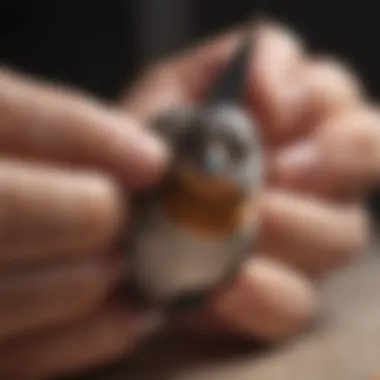
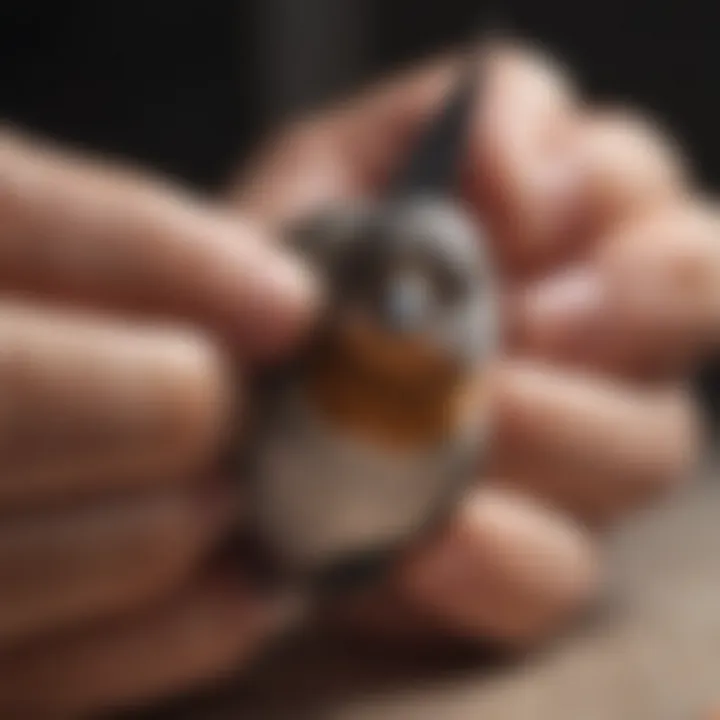
Preparation can't be overlooked when planning for nail trimming. Inadequate calming strategies can lead to a chaotic nail trimming session. From providing familiar and comforting surroundings to having your bird's favorite treats on hand, these are aspects that can significantly impact the ease of the procedure.
Utilizing calming techniques helps to establish a sense of security in your bird. Birds are creatures of habit and routines, meaning a little preparation can go a long way. If they feel anxious or threatened, the trimming can quickly become a battle instead of a cooperative endeavor. Therefore, investing time to create a relaxed environment can lead to a smoother experience for both you and your pet.
Choosing improper time
Timing also plays a significant role in the nail trimming process. Choosing improper time can mean attempting to trim when your bird is tired, hungry, or overly excited. It can have a negative effect on behavior; a hungry bird will be irritable, making the task harder. The ideal time is usually when your bird is calm and settled.
Seasonal changes can also influence a bird's temperament and energy levels. For example, if it’s a rainy day, your bird might feel lethargic. Understanding your bird’s mood and choosing to trim at an appropriate time can reduce the hassle and create a more positive experience.
Proper preparation, including choosing the right time and calming strategies, can profoundly affect the success of nail trimming.
Overall, being aware of these common mistakes can save you and your feathered companion a lot of stress. Trimming nails is more than just a chore; it's about fostering a trusting relationship and ensuring a healthy life for your bird.
Bird Behavior during Nail Trimming
Nail trimming in birds isn’t just about keeping those talons neat; it’s a multifaceted process deeply tied to their behavior. Understanding a bird's emotional state during this procedure can make all the difference. Nail trimming can be a stressful experience for many feathered companions. It’s crucial for bird owners to recognize the signs of anxiety or discomfort. Knowing how your bird behaves can guide you in making the trimming process smoother for both of you.
Understanding Stress Signals
Vocalizations
Vocalizations are a bird's main method of expressing their feelings. If you notice your bird squawking or squawking loudly during nail trimming, it could indicate high levels of stress. This key characteristic makes vocalizations an essential aspect of understanding their emotional state. Every species has its distinct calling patterns, and being attuned to these can help owners gauge how their bird is coping. For instance, a soft chirp may suggest contentment, while incessant cawing can signal fear or discomfort.
However, unique features such as sudden changes in pitch or duration can also provide insights. If a normally chatty bird goes silent, it could be a red flag. While vocalizations serve as an alerting mechanism, they can sometimes lead to stress escalation if not recognized in time. Thus, owners should tune into the sounds their birds make.
Body language
Body language can be just as telling as vocalizations, if not more so. Birds often use physical postures to convey their feelings. For example, if a bird puffs up its feathers or pulls in its head, it might be indicating discomfort or fear. This characteristic aligns well with the idea that non-verbal cues are crucial to understanding them. The way a bird holds its wings or turns its head can offer insight into its emotional state.
One unique feature of body language is its immediacy; it's a direct expression of feelings without delay. Recognizing these signals can empower owners to take proactive steps—like pausing the trim if needed. The downside is that body language can be subtle and easily overlooked, especially for less experienced bird owners. Therefore, becoming familiar with your bird's typical postures is beneficial.
Techniques to Minimize Stress
Using treats
Incorporating treats during nail trimming can work wonders for stress reduction. Offering a favorite snack like millet or a small piece of fruit can distract the bird, making the process feel less daunting. It encourages the association of nail trimming with positive experiences, a key element for owners concerned about their pet’s well-being. Treats serve not just as a distraction but also as a reward for good behavior, reinforcing the idea that nail trimming isn’t something to dread.
The beauty of using treats is that they can be tailored to the individual preferences of the bird, making it a highly personalized approach. However, it’s important to be mindful of the quantity given. Too many treats can result in dietary issues if done excessively, so moderation is key.
Positive reinforcement
Employing positive reinforcement during the nail trimming process is another effective strategy. This method involves praising your bird or offering treats whenever it behaves calmly. This simple technique creates a supportive atmosphere where your feathered friend learns that nail trimming is okay. The essence of positive reinforcement lies in gradually building trust between the bird and its owner.
One distinctive feature of this approach is its long-term benefits; over time, birds can become less anxious during grooming sessions. Nevertheless, it does require patience and consistency. Some birds may not respond immediately, and owners need to understand that building this comfort level takes time. Over time, you might find that nail trimming becomes a breeze.
In summary, understanding your bird’s behavior during nail trimming can significantly affect the overall experience, easing stress for both you and your feathered friend. Recognizing vocalizations and body language helps in gauging their emotional state, while using treats and positive reinforcement can encourage a more relaxed atmosphere.
By mastering these insights and techniques, pet owners can ensure that nail trimming becomes a more manageable process rather than a stressful situation for their birds.
Consulting a Professional
When it comes to grooming your bird’s nails, there may be moments when consulting a professional is the most prudent course of action. While many bird owners can become adept at trimming their pet's nails, certain situations warrant a visit to an avian veterinarian. Understanding when to seek help can greatly influence your feathered friend's well-being.
When to Seek Help
Health concerns
Health concerns in birds can manifest in subtle ways, making it crucial to pay attention to any changes. For instance, if you notice your bird struggling to perch or encountering issues when walking, this might be indicative of underlying health problems rather than simply the need for a nail trim.
The essential characteristic of health-related issues is that they often tie back to more serious conditions, such as fungal infections or metabolic disorders. Recognizing and addressing these early can ensure that your feathered companion leads a healthy life. An early intervention typically results in better treatment outcomes, making it a wise choice for any committed bird owner.
A unique feature of understanding health concerns is the timing of the consultation. Instead of waiting until a problem escalates, taking proactive measures often brings the best results. Yet, some might hesitate due to financial considerations; however, what’s at stake is the health and happiness of your pet. Ignoring subtle clues may lead to complicated situations that could have been easily remedied with a vet visit.
Behavioral issues
A different angle to consider is behavioral issues. Sometimes, you might face instances of an otherwise cheerful bird displaying signs of stress or aggression during grooming sessions. Such behavior can be puzzling and frankly distressing, making it essential to recognize when a professional's expertise could be beneficial.
The hallmark of behavioral issues is their unpredictability; one moment your bird could be friendly, and the next, it could react defensively to a nail trim. Seeking professional help for behavioral concerns can provide tailored solutions and techniques to help your bird remain calm. This approach is not just about nail trimming; it also fosters a better overall relationship between the bird and its owner.
The unique element of addressing behavioral issues is the emphasis on long-term habits. Sometimes, simple adjustments in your routine might make a world of difference, but understanding how a bird processes stress requires experience and knowledge that a qualified vet can provide. However, be aware that behavioral modifications might take time and consistency, which means a little patience could go a long way.
Finding a Qualified Avian Vet
Credentials to look for
When searching for a suitable avian vet, assessing credentials can’t be overlooked. A veterinarian who specializes in birds should ideally have formal education and training in avian medicine, accredited by recognized veterinary schools.
The defining trait of an experienced avian vet is their familiarity with a wide range of bird species, providing effective and specific care tailored to your bird's unique needs. This is beneficial for pet owners, as not all veterinarians have the same level of competence when working with non-traditional pets.
A unique feature of seeking qualified vets is the variance in services offered by different practitioners. Some might have advanced surgical training, while others focus primarily on preventive care. Always check for online reviews or request recommendations from other bird owners to ensure you find a professional who suits your requirements.
"The right avian vet can help bridge the gap between a routine nail trim and your bird's overall health."
Understanding services offered
Knowing what services are available from your avian vet can greatly enhance your experience. Besides routine check-ups and vaccinations, look for veterinarians who specialize in behavioral consultations, surgical procedures, and even nutrition counseling for your bird. These services can collectively contribute to a holistic approach to your bird's care.
The central characteristic of these offerings is their focus on preventive care. For instance, regular wellness checks can catch any health issues before they spiral out of control. This is immensely beneficial for bird owners who want to maintain their pet’s good health in the long run.
A unique aspect here is the educational resources some veterinarians provide. A vet who actively educates bird owners about their pet’s needs can empower you to make better decisions in caring for your feathered friend. Nonetheless, it’s essential to ensure that the vet’s philosophy aligns with your approach to care, as differing perspectives could inadvertently lead to confusion later on.
Ending
Caring for a bird’s nails goes beyond mere aesthetics; it’s a vital part of ensuring their overall health and happiness. Nail trimming is not just about cutting the length; it requires understanding, technique, and a keen awareness of your bird’s behavior. The right approach can prevent health complications related to overgrown nails, such as mobility issues, injury risks, and stress-induced behaviors. Adhering to this comprehensive guide allows pet owners to create a nurturing environment that promotes their feathered friends' physical and emotional well-being.
Summary of Best Practices
Recap of procedures
In reviewing the procedures for bird nail trimming, it’s important to note the thoroughness required at every step. Preparation is key: calming your bird sets a positive tone for the experience. As you select the right tools, remember that high-quality clippers can drastically affect the outcome and minimize stress for both you and the bird. Engaging in proper trimming techniques involves identifying the quick and knowing when to stop, which keeps your feathered companion injury-free. This approach is beneficial as it promotes a process that feels comfortable and routine rather than alarming and painful for the bird.
Final thoughts on the importance
Trimming your bird’s nails not only curtails potential injury but also strengthens the bond between you and your pet. Practicing good nail care underscores your commitment to your bird’s health and happiness. Each session becomes an opportunity for interaction and trust-building. It’s also paramount to maintain awareness of your bird's behavior and responses throughout this process, a unique aspect that can significantly enhance the trimming experience. The communicative and responsive approach to nail trimming contributes positively overall, setting the stage for better health, bonding, and satisfaction for both owner and avian friend.
Proper nail care is not just maintenance; it's a conversation between you and your bird, fostering trust and enhancing their quality of life.







